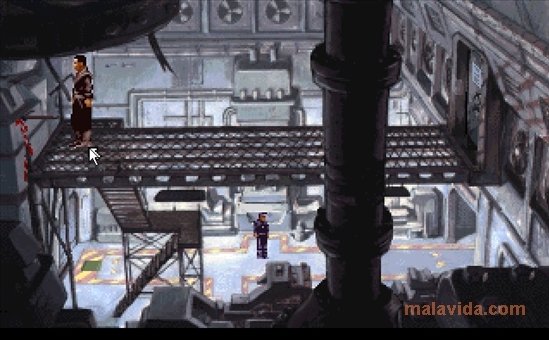
All of the voice actors deliver solid performances, with just the right amount of camp and absurdity when needed. The soundtrack fits the game well, with tunes that reinforce the cyberpunk theme, as well as add the appropriate tone for what is playing out in front of you. The sound design is another strong point.

Fortunately, this doesn’t happen too often and you’re mostly able to feel like you’re inside a visual novel. During a few conversations it’s particularly noticeable that Foster looks like a moving comic book character, while the other person almost appears to have been made of clay. There are some occasions where the cel-shading filter seems to have been forgotten, though. The whole game has a cel-shaded look that makes it feel like a comic book come to life. Not only is the story strong, but so is the art design. So this is what it looks like inside a mainframe. It worked, but that was only a few minutes into the game and it wasn’t the only time I had problems. I couldn’t get to my next objective without his info, so I had to reload my game. I pushed him once with no problem, then he somehow shifted to standing right in the middle of it and I was unable to push him anymore. In the very beginning, there’s a part where I needed to push a young boy on an old roundabout a few times to encourage him to give me some information. No, the biggest hindrance to this otherwise amazing game is just how buggy it is.

Not just with the camera either, although that certainly creates its fair share of headaches. It is however, a 3D fully explorable adventure game, so that leads to certain complications. Being a point-and-click style game, there isn’t too much in the way of complex gameplay. While the writing and world building are great, Beyond a Steel Sky suffers from a lot of technical issues. Unfortunately, it’s not all a blissful experience. It’s not all smooth sailing, as I had some issues with interactable objects that I’m unsure if it was due to quest stages or to bugs – most notably an early situation involving a hungry kid and a sandwich that I had to move on from after a frustrating 15 minutes because I could see the sandwich yet infuriatingly had no prompt to just pick up the damn thing.I hacked into more of these than I’d care to admit. Foster usually convinces people to help him instead of being told “do x and you’ll get y”, some “quest steps” can be wholly skipped if you are good at deduction and can figure out what to do, and the game features a built-in hint option in the pause menu on a 90-second timer, giving you clues if you so wish when you are stuck but forcing you to process them instead of spelling out the answer. While a classic adventure game in the likes of LucasArts or Telltale, BASS2 successfully avoids most of the pitfalls befitting the genre. Foster is a surprisingly well-spirited guy, displaying immense good will towards others and patience towards children, which helps deal with the game’s more serious “how would an AI deal with a ‘make people happy’ directive?” premise and the devastating consequences of that doctrine. Unlike the first game, which was a bit gray and rainy and dystopian, BASS2 is serious yet remarkably bright and colorful most of the time.

It teaches you the game’s simple mechanics and features a lot of content spread out among the environment, the characters, and the dialogue, and it helps set up the tone for the rest of the game. That whole section before gaining access to Union City actually takes a couple hours, yet it acts like a prologue.


 0 kommentar(er)
0 kommentar(er)
